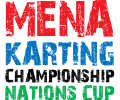The CIK-FIA Categories
The CIK-FIA’s mission is to implement international categories which can very well lie within the scope of national or even regional competitions.

The CIK-FIA has always chosen to govern categories for Drivers who are old enough to subscribe an international licence (minimum required age: 13 years old). The management of any classes below is left up to the ASNs.
The CIK-FIA categories are divided into three large families: direct-drive karts, gearbox karts and Superkarts. All these karts have in common the 2-stroke engine technology. Although it has not yet introduced them into its own range of categories, the CIK-FIA nonetheless closely follows with a possible direct interest for future years any private initiatives involving the introduction of new technologies in Karting, such as 4-stroke or electric engines.
Direct-drive karts have always been the majority. 100cc karts prevailed for almost 50 years. The current reference cylinder capacity is however 125cc. The increased capacity introduced with KF engines went along with the introduction of rev limiters. Switching over from 100cc engines to 125cc KFs has entailed very few changes as regards chassis design.
The KF engine idea arose as a result of two factors: first, the 100cc technique had arrived at the end of its cycle and the outrageous engine revs reached (over 20,000 rpm!) eventually made the engines fragile and extremely costly; secondly, the engine types used in Karting had to move towards more modernism, extra user-friendliness and more respect of the environment. To the cultural shock and heavy technical changes that a hasty switch over to 4-stroke would have entailed, the industrial partners, the distribution networks and most users have preferred the sustainable development of 2-stroke engines, in keeping with the modern priorities of societies. And the KF engine concept was born in 2007.
KF engines are not different from their predecessors only because of their increased cylinder-capacity as they also have the specificity to include a balancing shaft, an integrated water pump, an electric starter, a single-type centrifugal clutch, an ignition which includes a rev-limiter and, on the fastest versions, an exhaust valve also called “power valve”. KF1 is the top category used in the World Championship, with free chassis, brakes and tyres. In order to have better control over costs and to ensure increased sporting equity, the freedom formerly granted for engines (in the so-called “Super KF” version) has been cancelled and the current engines are homologated and strictly comply with the KF2 regulations. The KF2 category is located one notch below and still practised in various national championships. Chassis, brakes and tyres are submitted to the homologation regime implemented by the CIK-FIA. KF3 is the class reserved for 13 to 15 years old Juniors. The full equipment is homologated and engine performance is limited by the absence of a “power valve”, by a carburettor with a small diameter and by an engine rev-limit set at 14,000 rpm (compared to 15,000 for KF2 engines). Finally, KF4 is a category for which the CIK-FIA does not organise any championships: engines are in “leisure” type configuration. In 2010, the CIK-FIA launched a new World Championship called “U18”, in which engines, that are single-type further to a tender procedure, are a compromise between KF2, KF3 and KF4: from KF2, they have retained the maximum revs; from KF3, they have kept the cylinder without a “power valve”, and KF4 has given them its float-chamber carburettor.
125cc gearbox kart categories are now regrouped under the appellation KZ and, at CIK-FIA level, come in as KZ1 and KZ2. There are almost no technical differences between these two classes, and they are mainly distinguished by the level of experience and lists of results of the Drivers. Having long remained confidential in many countries, the use of gearbox karts has considerably been extended over the last decade, thanks notably to very stable technical rules. The foundations of engine homologation were implemented in 1998 and have practically not changed since. This lasting success is due to simple ingredients: a cylinder capacity of 125cc, inlet by means of a reed-box, single-carburettor designated further to an invitation to tender, homologated exhaust and 6-gear sequential gearbox with limited ratio variants.
Last category on the CIK-FIA scene, Superkart is Karting’s most atypical discipline as it can fully express itself only on… automobile tracks. With complete bodywork, powered by 250cc twin-cylinder engines developing nearly 100 HP (for hardly 215 kilos, Driver included!), tamed by Drivers who are more lying down than seated, those karts have a tendency to be excessive, to such an extent that their lap-times on circuits such as Silverstone or the Nürburgring make green with envy many sophisticated automobiles and single-seaters however considered as genuine racing cars. As regards its price/performance/sensations ratio, Superkart is unbeatable, all Motorsport disciplines taken into account.
More information: www.cikfia.com

 Facebook
Facebook Twitter
Twitter






